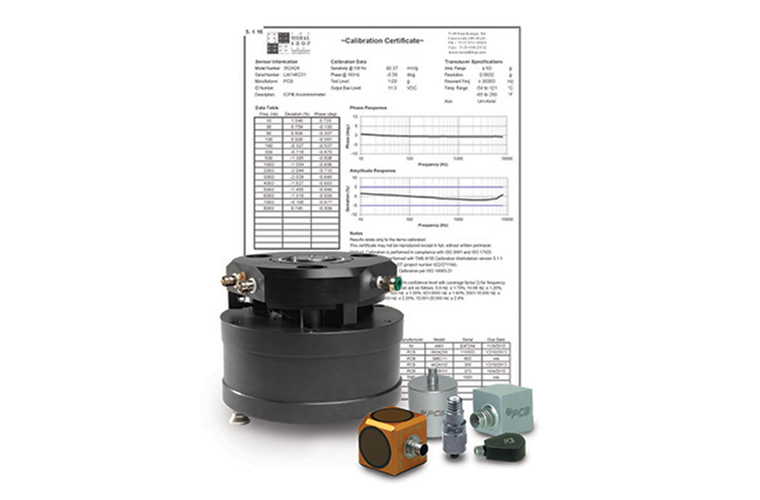Main Menu
- Home
- Product Finder
- Calibration Systems
- Calibration Services
- Digital Sensing
- Industrial Vibration Calibration
- Modal and Vibration Testing
- Non-Destructive Testing
- Sound & Vibration Rental Program
- Learn
- About Us
- Contact Us
 When asked about accelerometer calibration and intervals my first response is to ask, “What’s the cost of failure?” If you make a measurement and later find out that the sensor (or measurement channel) was bad, what is
the cost of invalidating that data or retaking it (if even possible…)? The answers to this question run the gamut from nothing to immense.
When asked about accelerometer calibration and intervals my first response is to ask, “What’s the cost of failure?” If you make a measurement and later find out that the sensor (or measurement channel) was bad, what is
the cost of invalidating that data or retaking it (if even possible…)? The answers to this question run the gamut from nothing to immense.
For example, if the test is a simple learning experiment in a university measurements course, the cost of retaking the data may be nothing. In fact, many professors design measurement courses and instructions counting on students to make mistakes so that measurement and analysis are taken a number of times. Learning from mistakes does a wonderful job of deepening our understanding and reinforcing proper techniques.
In more standard tests where there is easy access (and re-access) to the test structure coupled with redundancy in the measurement channels the cost of a single bad measurement is also not that high. For example, a single point in a large modal survey or a single channel in a test that will be set up for a number of days. This often is the case in typical modal analysis on automotive structures. However, you can begin to see that costs can escalate very rapidly depending on certain factors. What if the test structure is a prototype costing 10’s of millions of dollars? What is the financial carrying cost of holding onto this prototype for another day? With aerospace structures, the price can be extraordinary.
Another extreme category falls under the heading of “one shot” tests. Here telemetry is often involved and there is only one chance at the data: like a rocket launch, building implosion, certain large scale explosive tests, etc. Here the measurement has to be right. Channels are checked, double checked, calibrated, re-verified and data is backed up concurrently. You name it and a double check is planned for.
A final category is those measurements made for legal purposes. Health and human exposure measurements used in legal proceedings for noise or vibration also need to withstand the scrutiny of the legal system in assuring that the measurement and resulting analysis are correct. In fact, the difference between correct measurements and “suitable output” highlights one of the major design and performance differences in the microphone industry. A communications microphone is designed to provide an intelligible output over a variety of environments and situations where a measurement grade microphone is designed to give an accurate output related to the amplitude, frequency content and phase. In addition to the importance of calibration, acoustic instruments like sound level meters have type certification to ensure the needed accuracy of the complete measurement channel.
Regardless of your "cost" of failure, a few things are always common... like the need for credible (ISO 17025 accredited), responsive/timely calibration. Some organizations choose to build the capabilities in-house, while others outsource to local metrology houses or vendors. Whichever your specific choice, be sure you know, trust and audit their calibration expertise. A lot can be riding on that calibration.
I’ve often heard the advice to live your life like your choices will be published in the headlines of tomorrow's news. Sometimes making the right choice takes courage and sometimes it is about making a choice at all…
Are you calibrating? And how often?